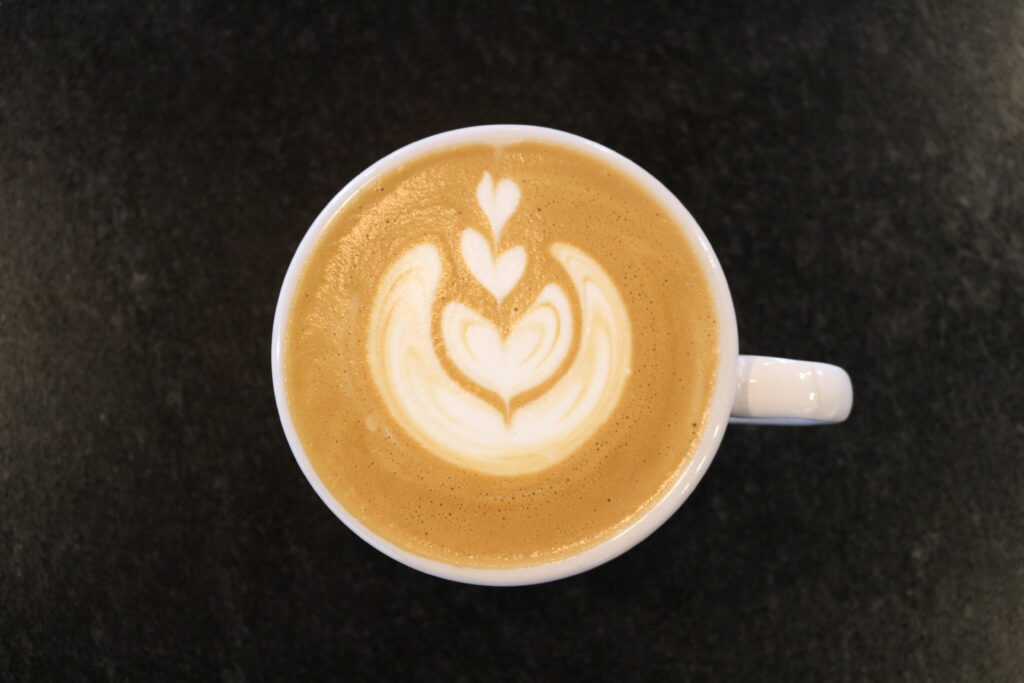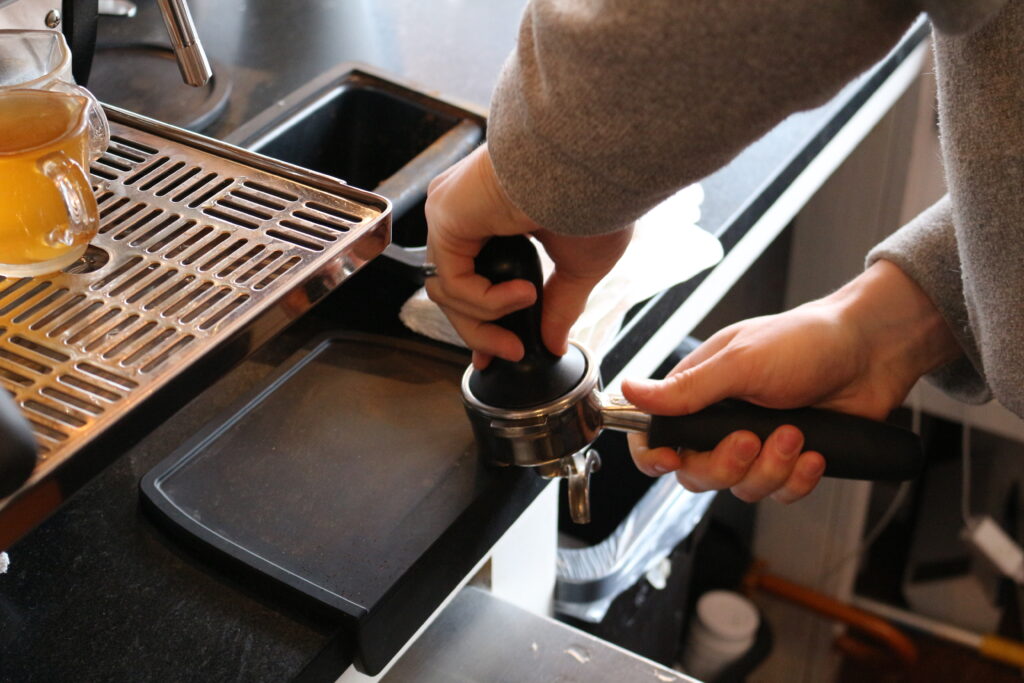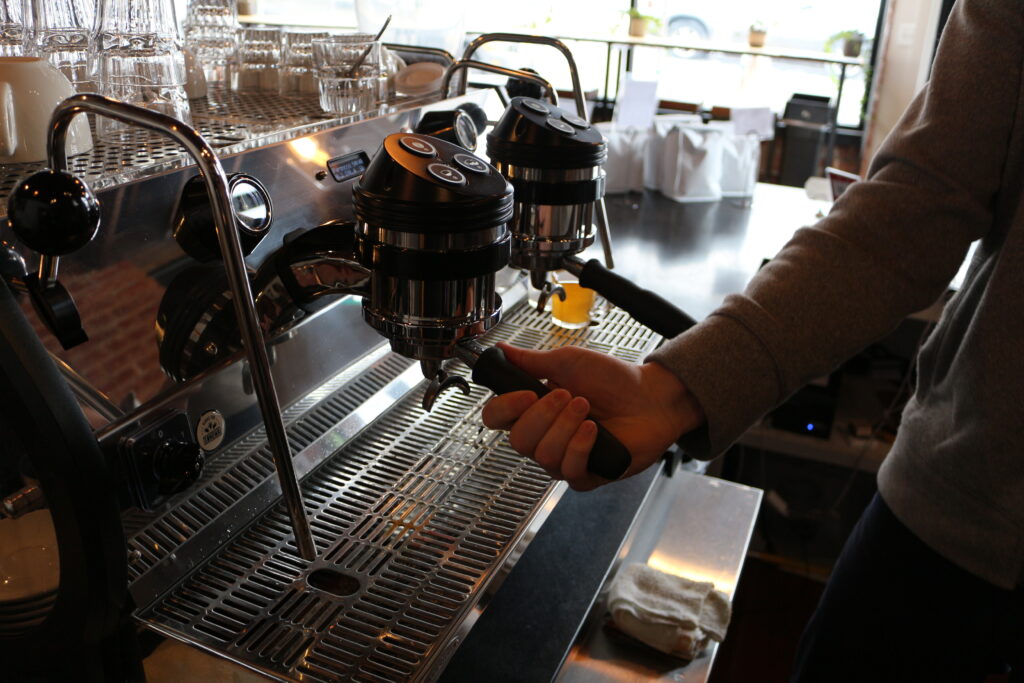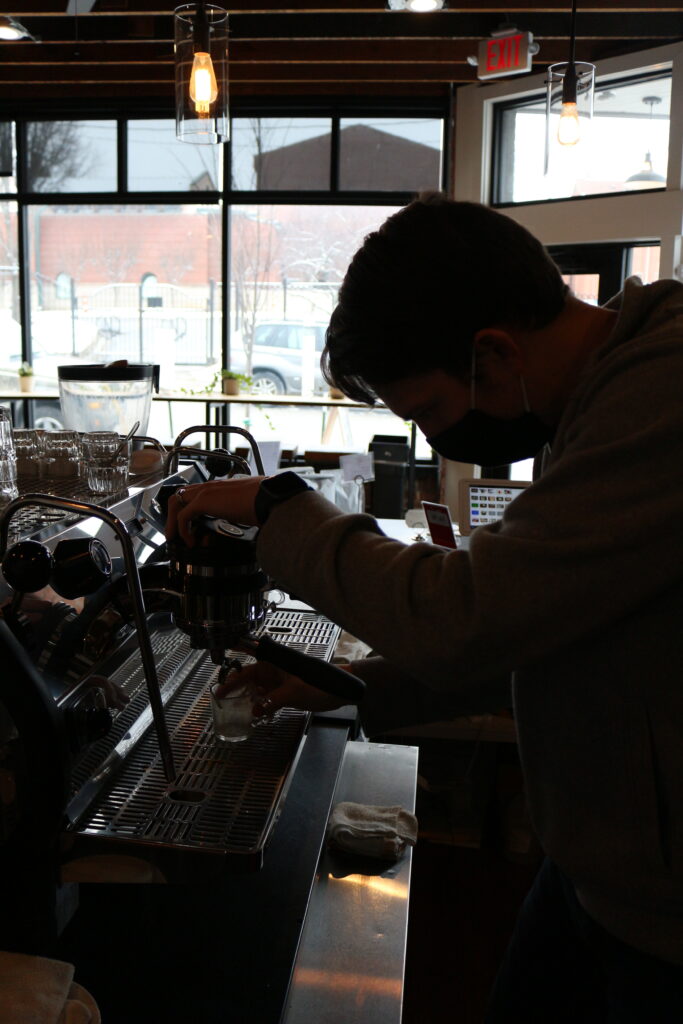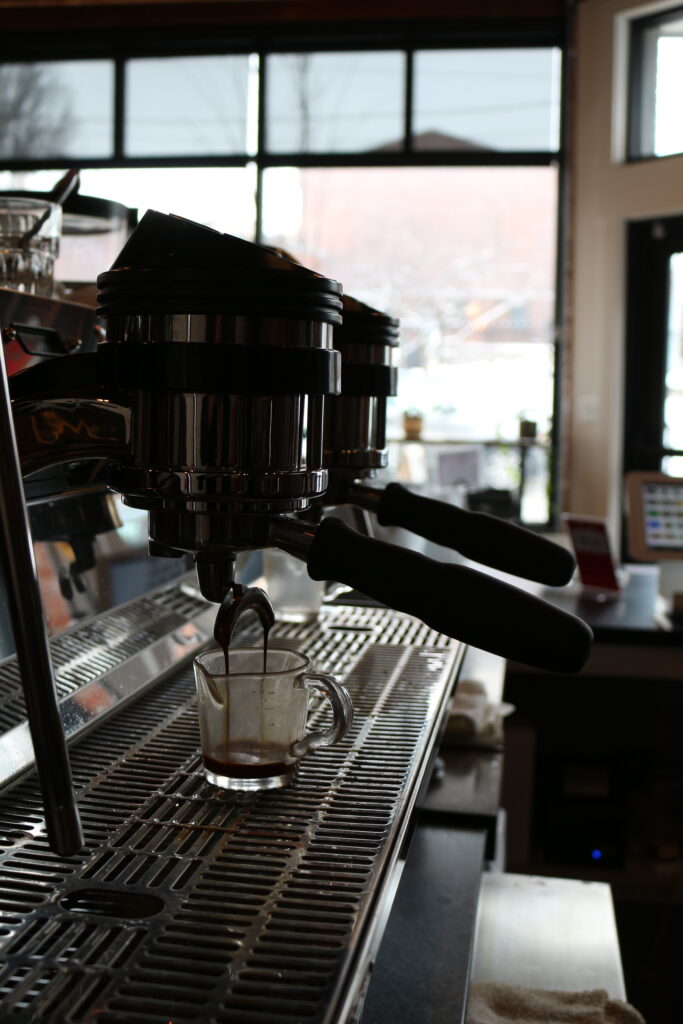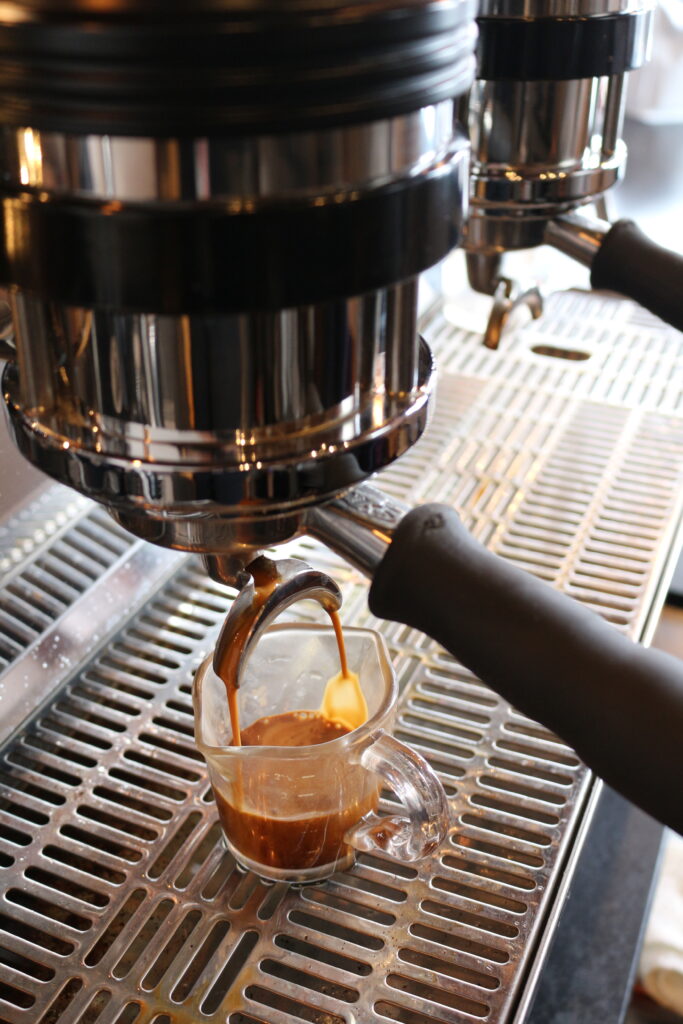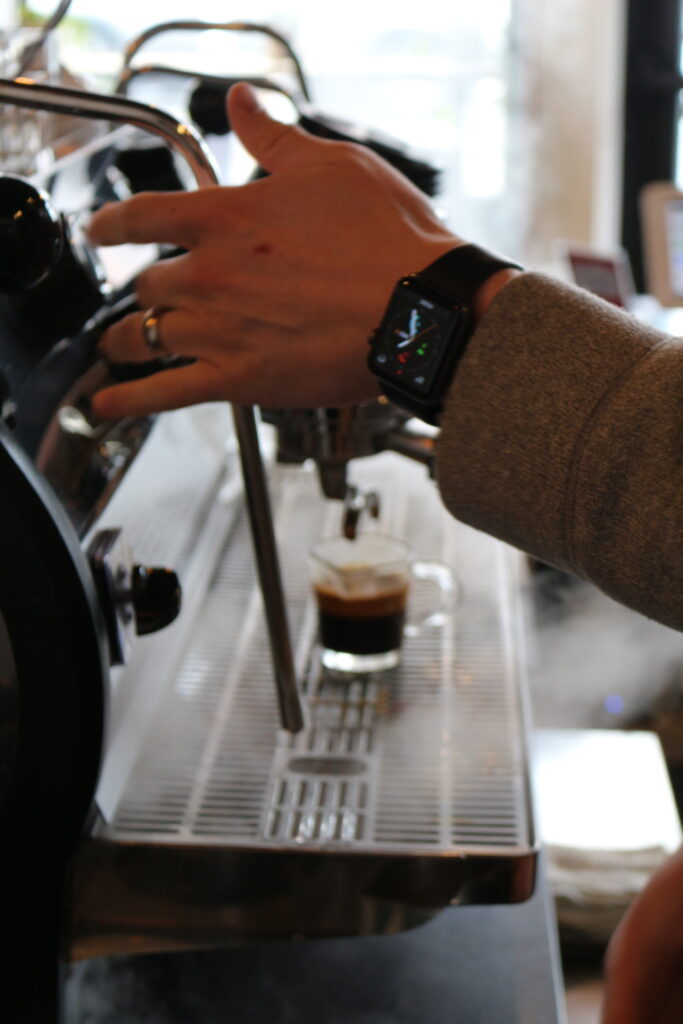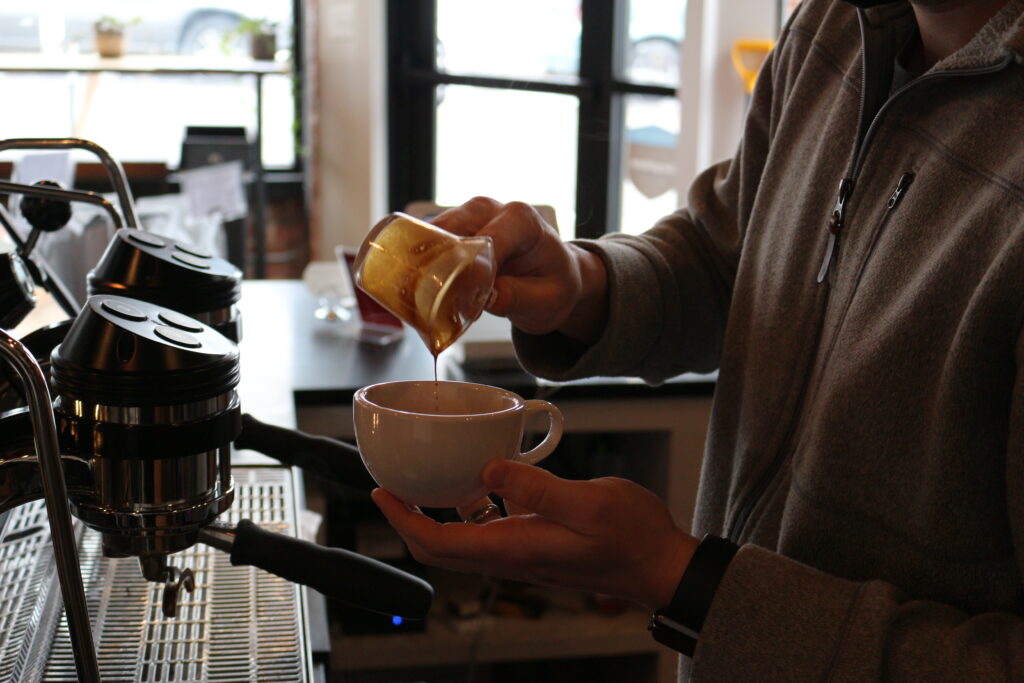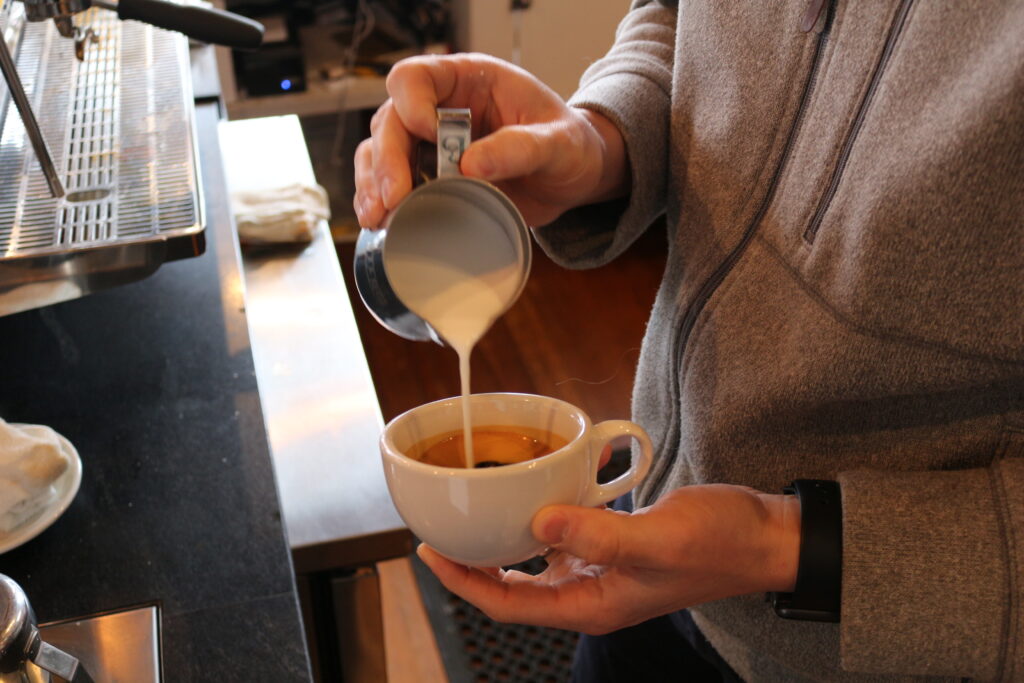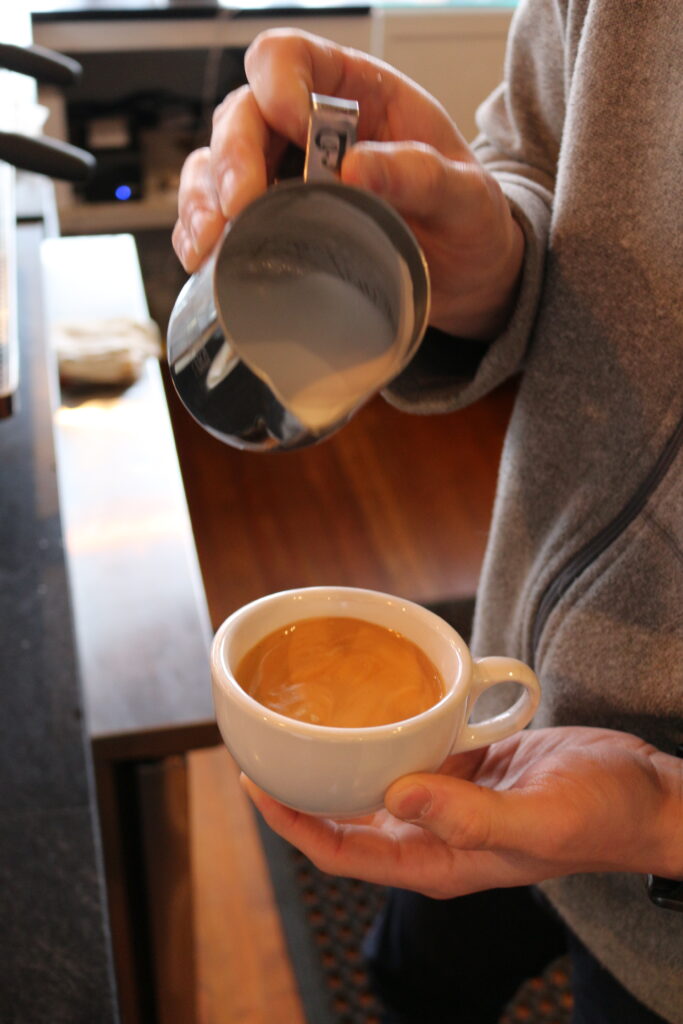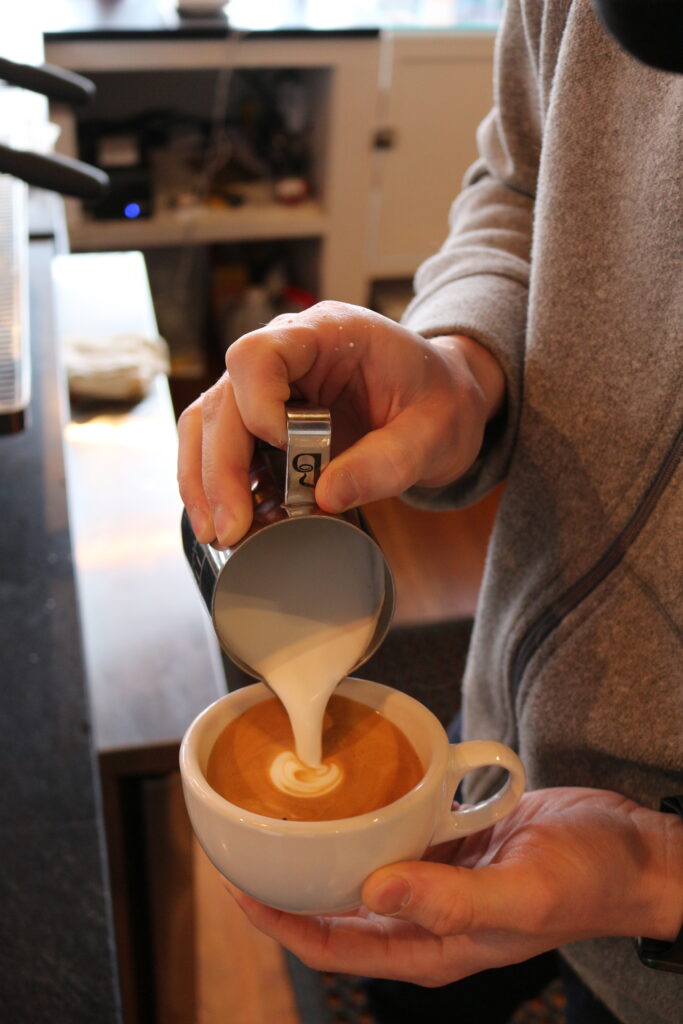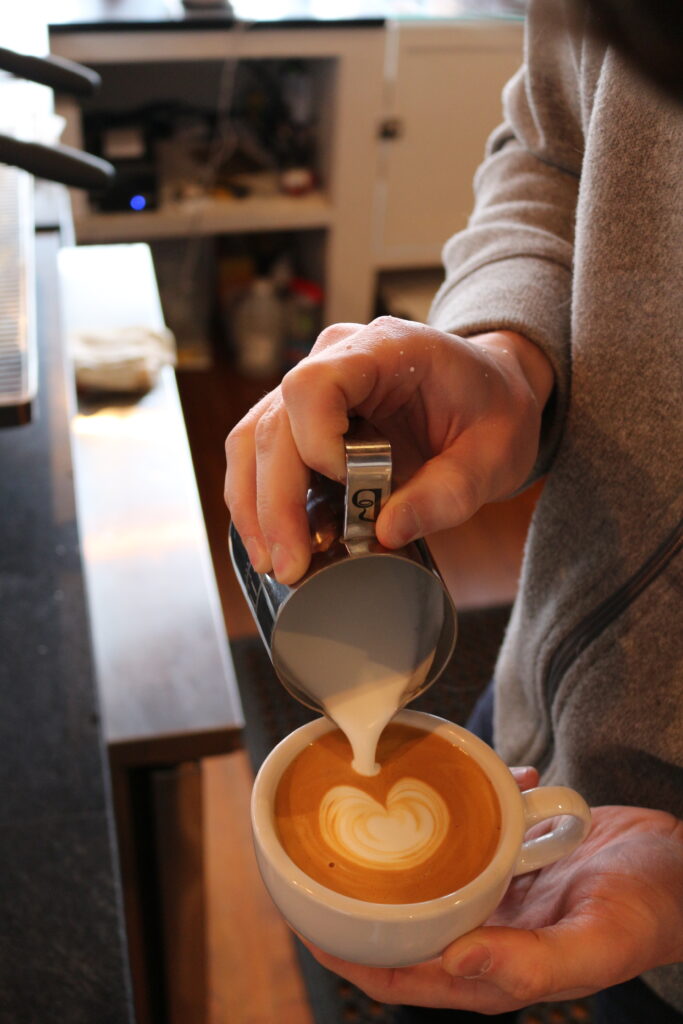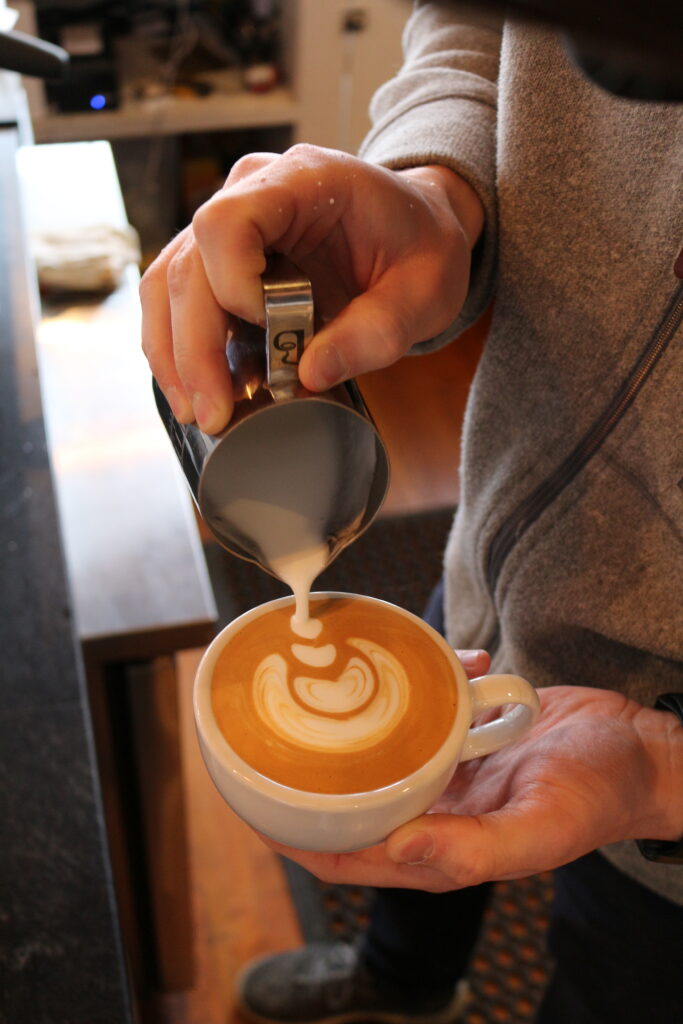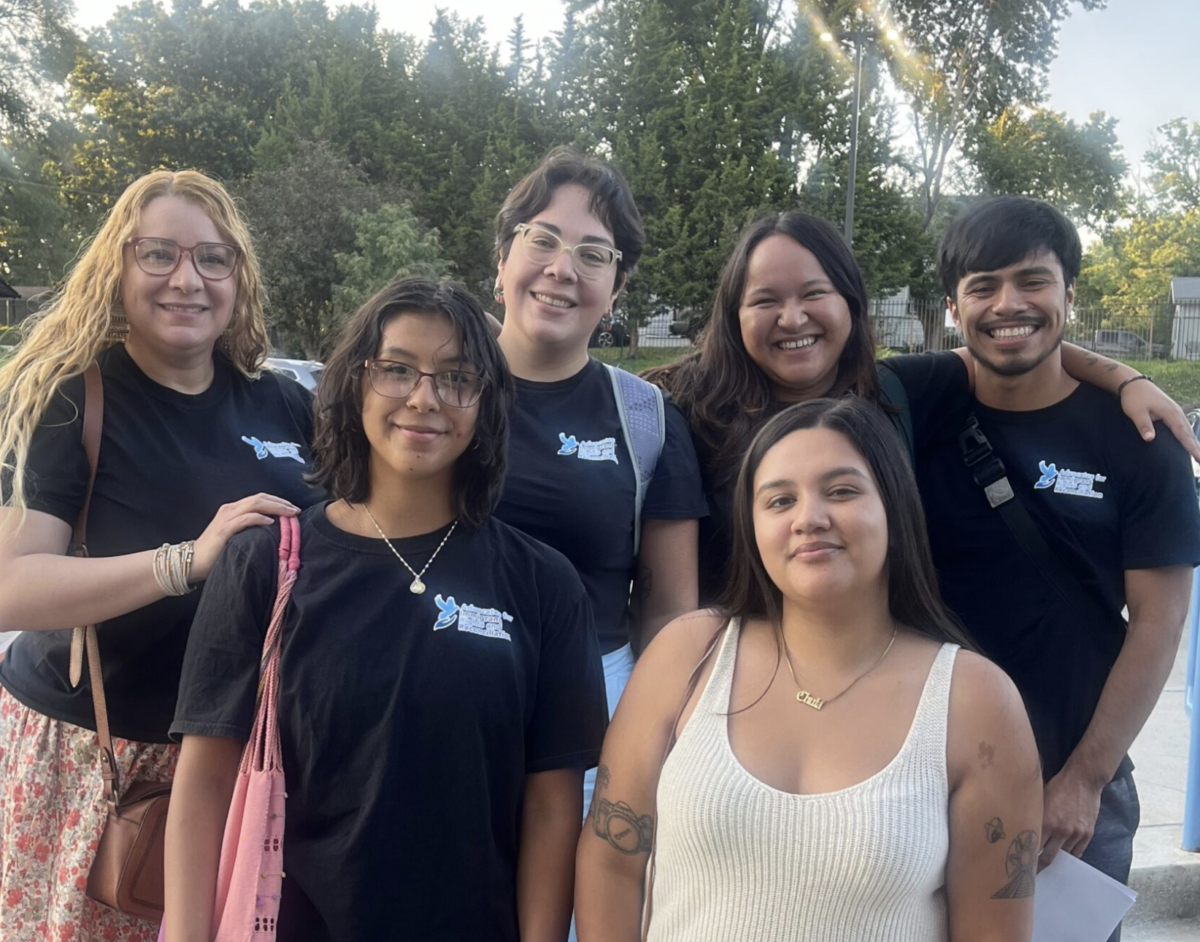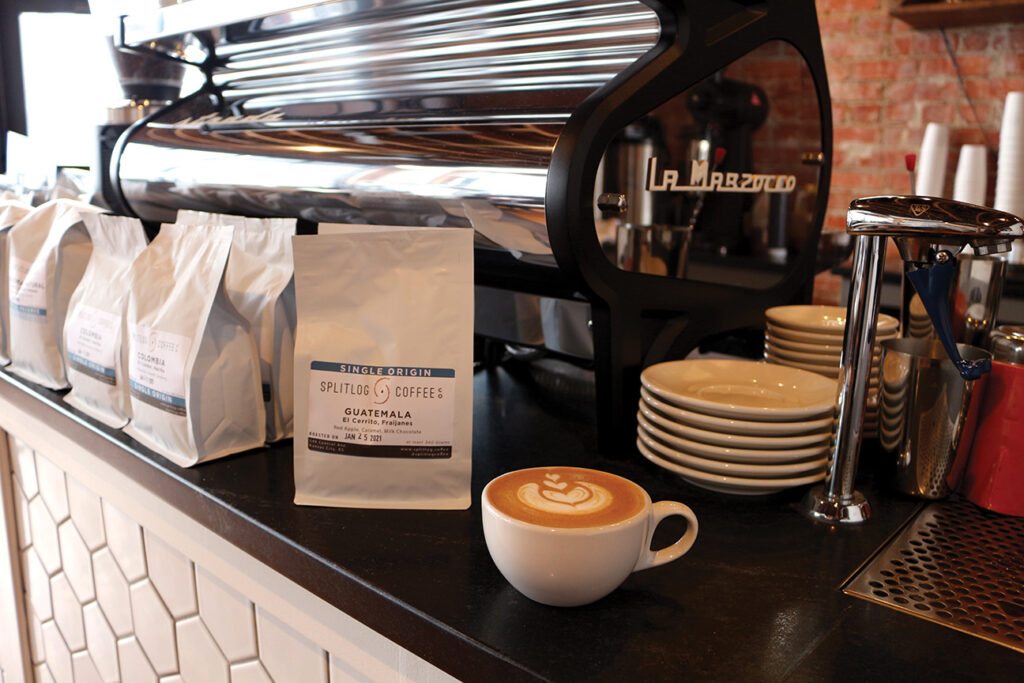
Abby Hoover
Managing Editor
On a quiet afternoon at Splitlog Coffee Company, surrounded by socially-distant groups of students studying and friends catching up over a cup of coffee or enjoying a quick but healthy meal, General Manager Simeon Bricker has a spark in his eyes as he talks about the fuel that keeps the neighborhood buzzing: coffee.
Splitlog’s Pendleton Heights location opened in December of 2019 next to the Pendleton Arts Block at 546 Olive Street.
Founded in 2017, by Adam and Caleb Whittmer, Splitlog Coffee Company’s first location was in the Strawberry Hill area of Kansas City, Kan. It is named after Mathias Splitlog, a landowner, and entrepreneur, and son of the Chief of the Wyandottes, who built his legacy by starting a horse-powered sawmill.
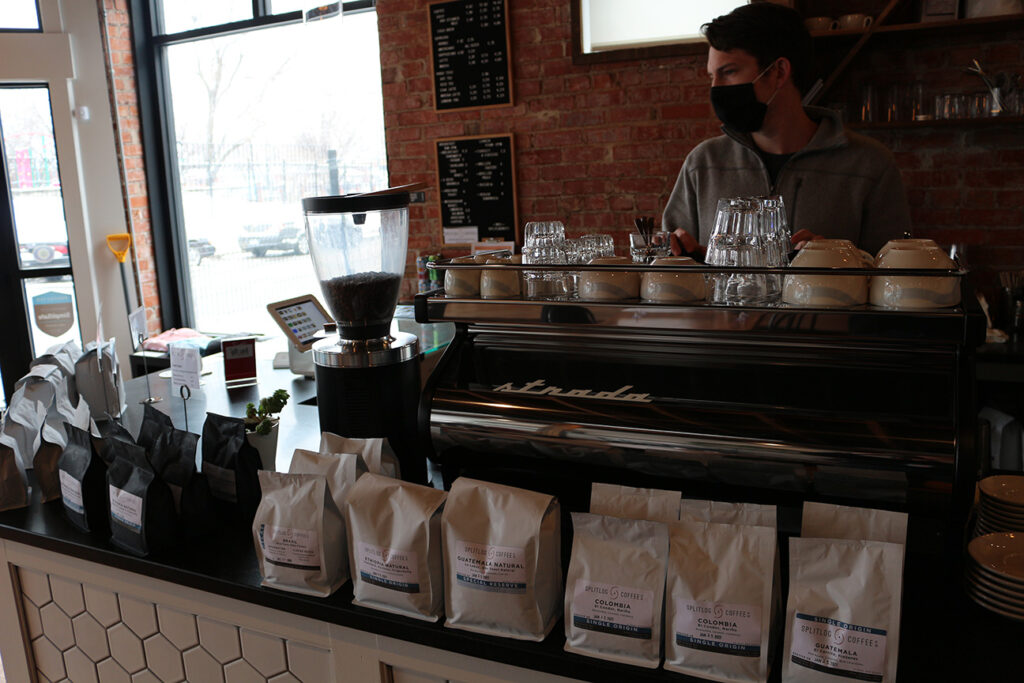
The brothers brought on Bricker, a longtime coffee professional, to help them create a unique coffee experience.
“We originally called it Splitlog Coffee Company because we didn’t want it to just be a coffee shop,” Bricker said. “We wanted to also be a roaster and wholesaler, and anything else that we could do that we felt would benefit our community.”
This past December, the company began roasting its own beans at the Strawberry Hill location.
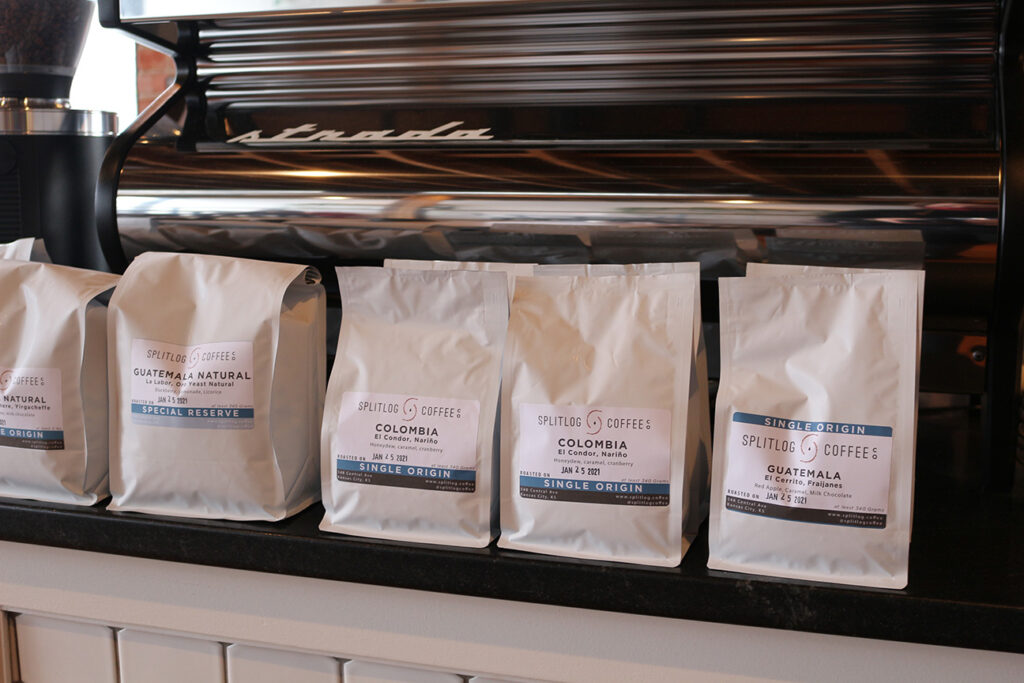
“We wanted that combination of food and coffee as something that really rounded out and complemented all of our services here, and we actually, along with the roasting space we built out a kitchen space for our other location coming soon,” Bricker said. “We’re really close to that kind of original vision that we cast.”
Warm, welcoming spaces fulfil their vision of a comfortable place to work, study and gather that they set out to create.
The Whittmers have been investing in the Northeast, much the same as in Strawberry Hill, by managing properties and working on housing in the area.
“We also knew that ArtsBlock was going to be going in next door and so just seeing the changes that were happening, we wanted to be a part of this area,” Brickere said. “As it evolved, we wanted to offer what we were good at, which was coffee. So we thought it was a good location for that, just something that someone else we could offer to the community here, as well as food.”
Tucked away on a quiet one way street, Splitlog gets a lot of neighborhood regulars that walk or stop by on their way out.
“We’ve recognized that in our first year, really what we’re working toward is establishing a base of customers who are regulars who trust us,” Bricker said. “That’s been our primary customers that we’ve seen are people that live and work in the community and we love to see that.”
Splitlog’s team is always working to create new experiences, both in coffee and food that will draw people out of their way.
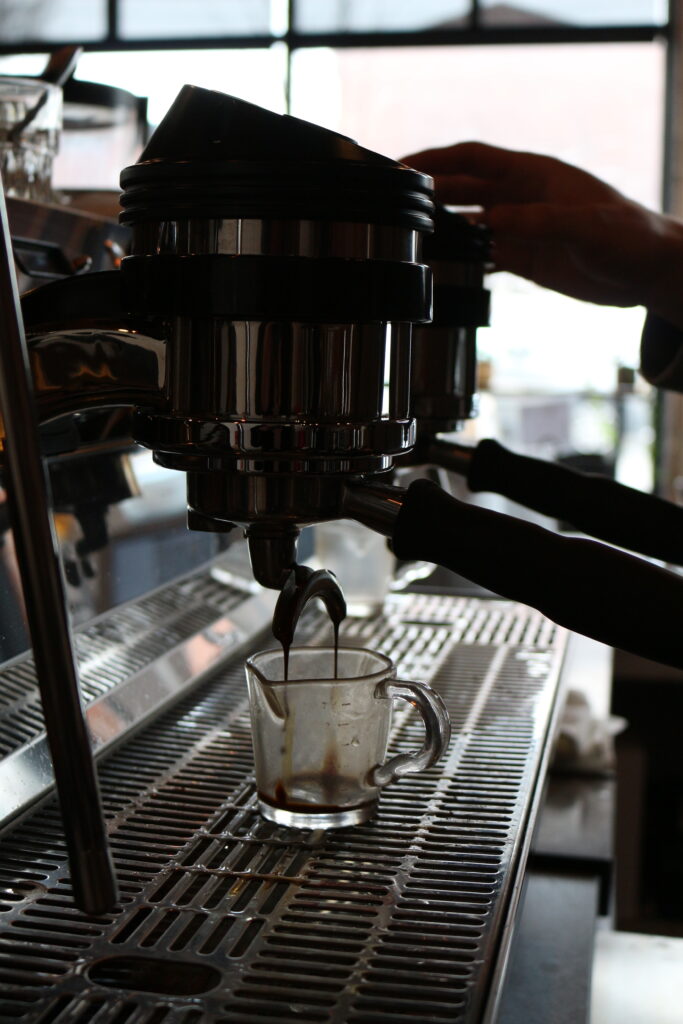
“It’s designed to be a coffee shop and function as that third space for people, you could grab your breakfast, you can grab your lunch, and you can obviously have as much coffee as you wanted to have,” he said.
Splitlog’s food menu was created with balance in mind, balancing protein and greens, considering acidity.
“A good example of that is our avocado toast: we do a pickled onion on there, which is just phenomenal, and then a little bit of spice so it has this great acidity, but it also has this good balance of bread and vegetables,” Bricker said.
He has worked in coffee for 11 years, beginning in 2010 as a barista, then a coffee educator. Over the years his appreciation for the process grew as he worked in quality control, as a roaster, and then as a green coffee buyer.
“For me, my favorite part is sourcing coffee,” Bricker said. “It’s always different. It’s always changing, and it connects you with a much larger part of the coffee chain. It’s really a global market that we get to engage with.”
Sourcing is 90% just tasting coffee and saying, “Yeah, this is, this is really good,” and looking for new experiences with coffee flavors, Bricker explained.
He describes roasting as his ideal situation because it can’t be rushed. The process is really involved, Bricker said, and roasters have to adopt a purposeful, steady pace.
“It’s not like you can speed it up and work really fast, but you have to stay organized and you have to stay focused and so it’s sort of this rhythmic, meditative process that’s also got this huge science component,” Bricker said. “And then at the end of it all, you get to taste the coffee and say, ‘How can I do this better?’ and then go back to it, so I love the roasting side of it as well.”
“It’s such a complex thing that when you do get an excellent cup of coffee you do appreciate what has gone into that a lot more, especially when you think about how difficult it is for coffee farmers to grow their coffee,” Bricker said. “As a farmer, you grow your coffee and you process it, but because it’s an annual crop, if you want to make a change, you’ve got to wait a whole other year.”
If farmers make a change, they take a risk that they could make their coffee worse, and although hopefully it makes it better so it gets a higher price, based on its quality. Farmers also consider the market, which could go down, even if their quality improves.
“Good coffee from origin is something that’s very difficult to do and something that I’d love to see us be more involved in helping farmers with that process,” Bricker said.
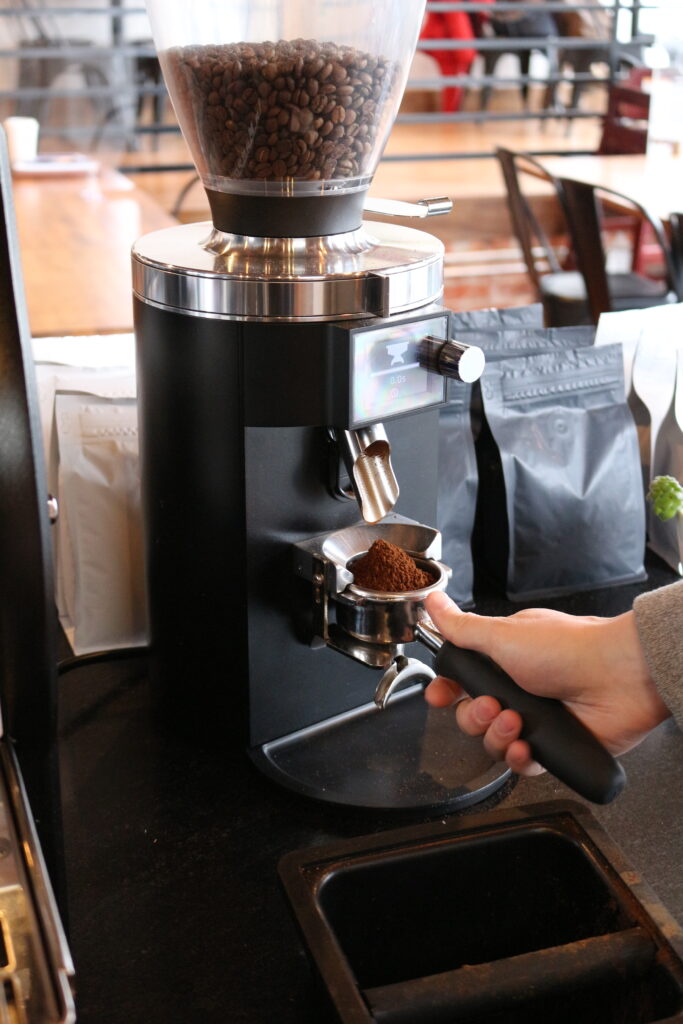
Splitlog’s three barista/cooks are trained to prepare coffee in a variety of methods, with factors like time and grind size setting them apart.
Coarse grinds and a longer brew time are used for a French press, moving next to a batch brew, which takes about four minutes. As the grind gets smaller, pour overs and small brewers take about three minutes. At the finest, grinds used to make espresso are pressurized with water for 20 to 30 seconds to extract from the coffee.
“In most brew methods that are two plus minutes, we’re using water to kind of open up the cell structure and soak coffee, basically to extract it,” Bricker said. “But in the espresso, we’re using pressure. so we’re actually forcing the coffee through, and it’s more stripping solubles from the coffee rather than absorbing them. We use fine grinds to create surface area, then we pack that into a portafilter, which is just a metal filter where the coffee sits, we plug it into a group head, pressure water through it.”
What is extracted is a thick, heavy beverage that is one to two ounces in volume, but is equivalent to the caffeine found in a 10 to 12 ounce cup of coffee. At its roots, espresso is intended to be both made and drank quickly.
The technical aspects of pulling a shot of espresso can be shown in an hour or two, but for baristas to master the craft takes days, weeks or even months of repetition. Especially because espresso is ever changing, a barista can dial it in one day, and then – because the espresso is another day off roast so it has degassed further and maybe dried a little bit more – the next day, they’ll have to dial in a little differently.
When “dialing in” for the day, baristas consider a host of factors from weather to output volume, and they have to be able to discern between a bitter or sour taste. They then adjust the grind size and amount to create the perfect shot of espresso, which comes with experience.
“They’re a great team, they do an awesome job with everything and we’d love to see it grow,” Bricker said of his employees. “Obviously we need volume to do that and we think that there’s a lot of potential for that to happen in the coming year.”
In the coffee culture of today, milk and its alternatives are a big component, creating lattes, cappuccinos that are often flavored.
“We have some common flavors like caramel, vanilla and chocolate that we can add to these, and then we try to craft seasonal and signature drinks as often as we can,” Bricker said.
Currently they’re working on a red velvet for Valentine’s Day with buttermilk, cocoa powder and vanilla.
“We take the craft of coffee on espresso very seriously,” Bricker said. “It’s not just a technical, robotic thing that we do every day, but it’s something that our baristas are all passionate about and we hope that our customers can recognize in the cup.”
